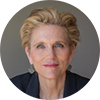Download PDF

Stephen Gieser (my husband) is a superb glaucoma specialist. He also knows a lot about 20th-century art. He acquired this expertise as a fourth grader visiting art museums in New York City every Sunday while his father, a retina fellow with Harvey Lincoff, did rounds at New York-Presbyterian Hospital. While it’s fun to visit the modern wing of any art museum and talk with Stephen about the paintings, it just might improve my clinical acumen as well, as a study published in January’s Ophthalmology suggests.1
Gurwin et al. randomized medical students into 2 groups: One received art observation training at the Philadelphia Museum of Art during 6 sessions, while the other had no art classes. When taking a written test that assessed ophthalmology clinical observational skills, the group with art observation training scored significantly better than the control group. The students with higher scores attributed their ability to notice clinical details to the art observation training.
The study’s findings didn’t surprise Alfred Nadel, a vitreoretinal specialist in Manhattan and a serious visual artist. During a visit to his Brooklyn studio, I listened as Alfred described several of his paintings in detail. “If you look at a work of art carefully, you begin to see many things.” Alfred believes that observation skills can be taught—and that they make for better clinicians. He emphasized that both clinical skills and astute observations of human behavior (and the interaction between family members) can be developed, via art and in the exam room.
I agree. A quick example: When my husband was a glaucoma fellow at Wilmer, his mentor, Alan Robin, assigned him the task of carefully studying the appearance of filtering blebs and seeing what he could learn about trabeculectomies by taking the time to describe each bleb in detail. That advice was repeated to me, and 3 decades later, I still spend extra seconds to carefully observe a bleb.
To accompany the Gurwin paper, well-known author Malcolm Gladwell and David Epstein wrote an editorial about the value of creative endeavors for scientists and clinicians.2 They discussed the tension between the specialized education required to be an ophthalmologist (with an expanding knowledge base) and the idea that spending time in an art museum is valuable. Which is more important?
I was particularly intrigued by Epstein and Gladwell’s reference to Santiago Ramon y Cajal, the Nobel Prize-winning father of modern neuroscience, whom they quote to support the idea that artistic hobbies are “cross-training” for scientists. I’d just noticed an ink-and-pencil drawing by Cajal, which was reprinted in The New Yorker to promote an exhibition of Cajal’s works.3 Cajal combined his scientific and artistic skills to present his understanding of neuroanatomy with stunning aesthetic beauty and scientific clarity that could not be communicated with a photograph.
Teaching medical students about art isn’t a new idea. In 2003, Mount Sinai School of Medicine began teaching art appreciation to its third-year medical students, taking them to the Metropolitan Museum of Art. Mount Sinai also joined Yale, Stanford, and Cornell in offering humanities courses during medical school. In response, traditionalists may say that trips to the art museum are superfluous, especially now when students have a larger body of knowledge to learn.
However, teaching “softer” skills may become more important. Ophthalmologists can’t possibly process the vast amount of data available and will increasingly turn to “point of learning” tools and artificial intelligence. We’ll increasingly rely on test results and exquisite images. As digital data interpretation, EHRs, and imaging demand more of our attention, perhaps the role of the physician—more than ever before—is to counsel, interpret, listen, and observe. In fact, cultivating the art of medicine may be what we most need to teach our students.
___________________________
1 Gurwin J et al. Ophthalmology. 2018;125(1):8-14.
2 Epstein D, Gladwell M. Ophthalmology. 2018;125(1):2-3.
3 Goings on about town: Art. The New Yorker. 2018;93(47):8.